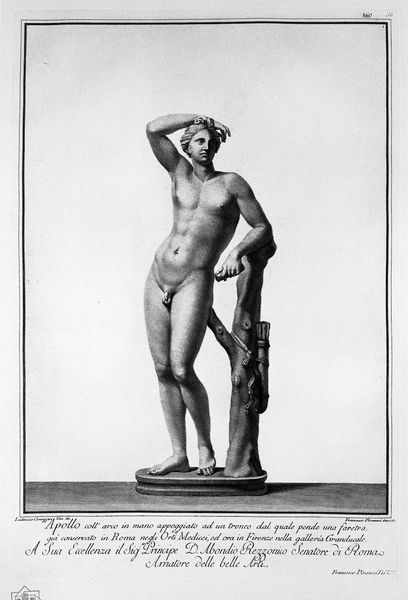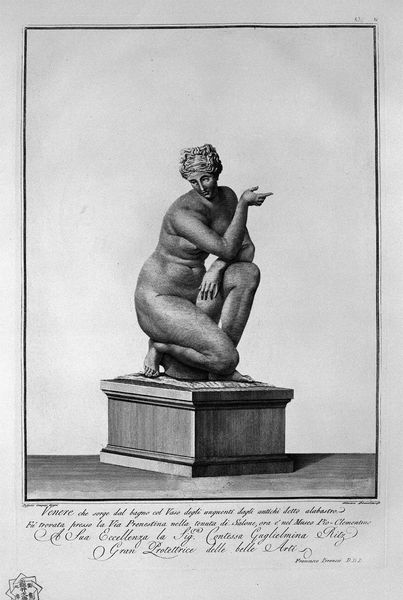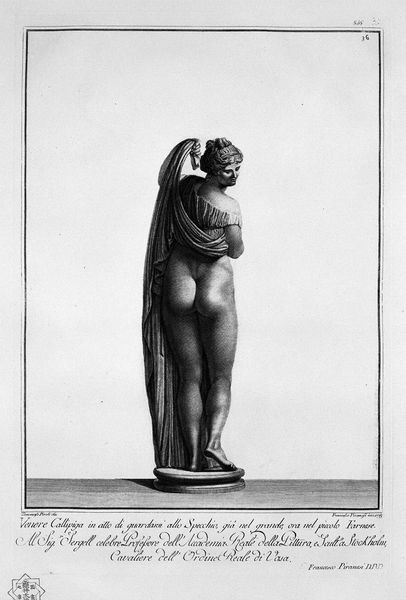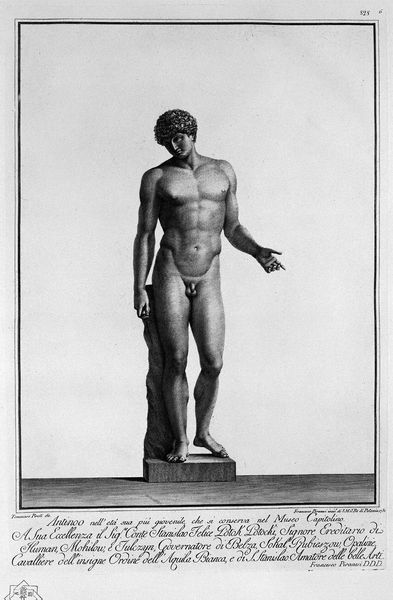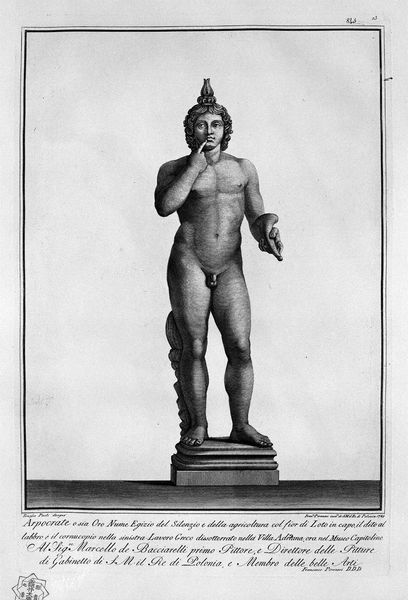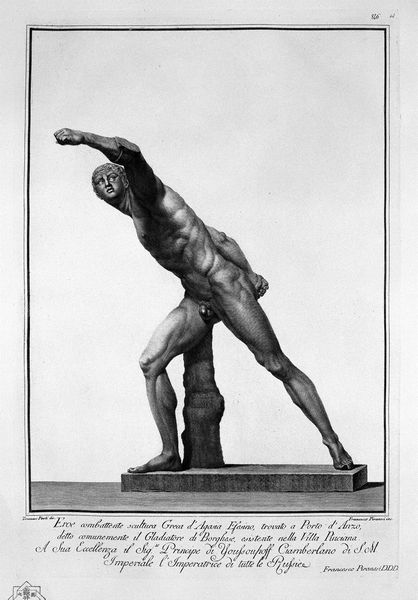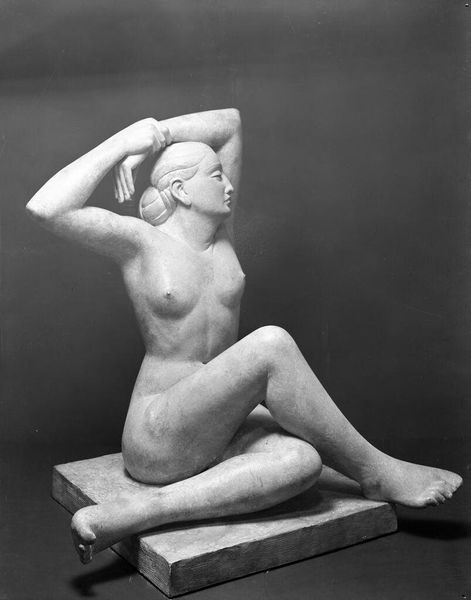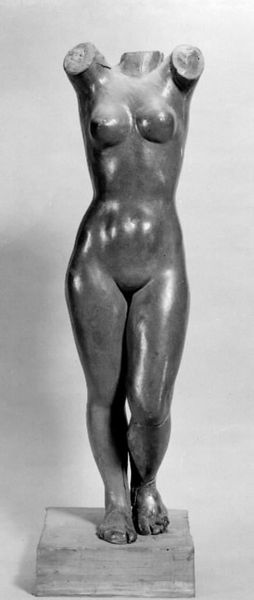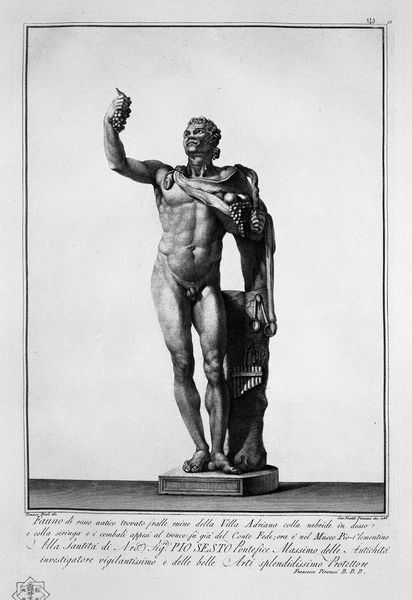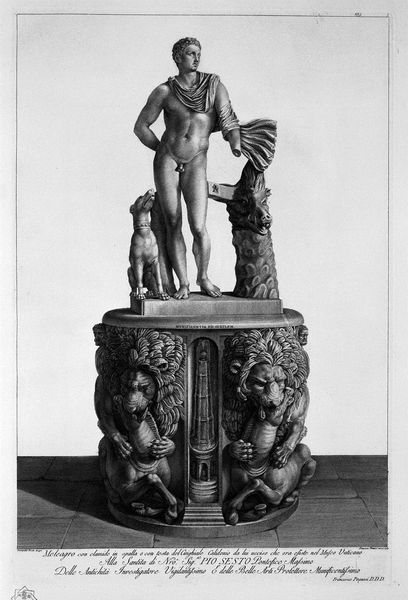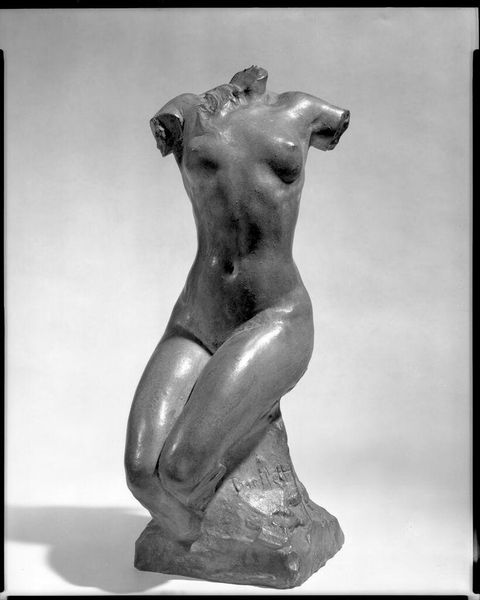
print, sculpture, engraving
#
neoclacissism
#
statue
#
allegory
# print
#
greek-and-roman-art
#
figuration
#
sculpture
#
nude
#
engraving
Copyright: Public domain
This is Giovanni Battista Piranesi’s engraving of the Venus Medici. She stands in the classical contrapposto pose, her hands modestly covering her breasts and genitals. The figure of Venus, born from the foam of the sea, embodies beauty and love. Here, she is accompanied by Cupid and a dolphin, symbols deeply entwined with her mythology. This iconography has roots stretching back to ancient Greece and Rome, where Venus was a central figure in both religious and secular life. Over time, the meaning of Venus has changed. Consider Botticelli's "Birth of Venus," where she is propelled to shore on a shell, a scene evoking both spiritual purity and sensual awakening. The dolphin, often seen as a guide or protector of sailors, further enriches her association with the sea. The gesture of modesty, known as Pudica, is a visual echo that resonates through centuries. This gesture, where Venus covers her body, is not merely about physical concealment but also about revealing a deeper psychological tension between exposure and protection, desire and restraint, engaging viewers on a subconscious level. The symbols progress cyclically, evolving, resurfacing, and taking on new meanings across different historical contexts.
Comments
No comments
Be the first to comment and join the conversation on the ultimate creative platform.
